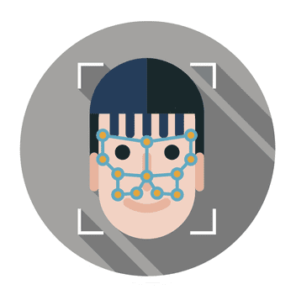In December of 2017 FindBiometrics surveyed over 200 members of its informed audience – including executives from the world’s leading biometrics companies – on topics relating to the identity technology industry over the past 12 months. The results comprise the 15th Annual FindBiometrics Year in Review.
There are a number of fascinating results to be found in our latest Year in Review survey, but among the top highlights is the consensus on the game-changing impact of Face ID.
The Initial Impact

The infrared facial recognition system made its debut on the biggest – and most expensive – of Apple’s new mobile devices launched last autumn, with the company highlighting it as one of its flagship features. The authentication system projects a 30,000-dot grid on the user’s face, allowing it to be mapped in three dimensions; and Apple has asserted that in most cases the system is accurate to one in a million users – a far greater accuracy than that of Apple’s fingerprint scanning Touch ID system.
For many, the biggest surprise of Face ID was that it did not complement Touch ID on the iPhone X, but instead replaced it. Meanwhile, industry analysts speculated that if Face ID and the iPhone X proved to be a big enough hit, Apple would replace Touch ID with Face ID on all of its future devices.
Now, at the start of 2018, it’s pretty clear that both the iPhone X and its Face ID system were a great success. The biometric authentication system received high marks from reviewers and customers thanks to its ease of use and accuracy, with users enjoying the convenience of unlocking their phone simply by looking at it.
The Industry Consensus
All of that excitement may go some way toward explaining the responses to Question Eight of our Year in Review survey, which asked respondents to indicate whether they agreed with the statement, “The introduction of Apple’s Face ID 3D facial recognition on the new iPhone X will significantly affect the public perception of biometrics.” Here’s what the results looked like:

Over three quarters of respondents indicated that they are believers, with 47.8 percent saying they Agreed with the statement, and 31 percent saying they Strongly Agreed. Only 4.4 percent said they Strongly Disagree.
Apple has a strong track record in this kind of thing. Its introduction of Touch ID on 2013’s iPhone 5S proved to be a catalyst for the mobile biometrics industry, which subsequently exploded with smartphones from other companies that featured their own fingerprint sensors. Now, an integrated fingerprint scanner is considered standard fare for premium and even mid-range smartphones.
If that trajectory can be applied to Face ID, there is good reason to believe that it will dramatically shift public attitudes toward facial recognition. While a relatively small proportion of consumers will actually use Face ID – the phone starts at about $1000 – other smartphone makers are likely to emulate the system in their own devices, from potentially more sophisticated infrared imaging systems to other technological approaches that are less costly and easier to implement, and that should result in a lot more users getting acquainted with facial recognition technology. And, as the results from a newly published Visa survey suggest, familiarity could be key to warming consumers’ attitudes to biometric technology.
The results from FindBiometrics’ Year in Review question almost add to the evidence in themselves. Survey respondents are largely based in the biometrics and adjacent tech industries; thus if they are bullish on 3D facial recognition, there’s good reason to believe that the tech industry is shifting in that direction.
Fuel to the Fire
 Still, isn’t this all just about mobile devices? Yes and no. While fingerprint recognition technology took a while to start to find mainstream applications outside of the mobile sector, the iPhone X’s Face ID system has arrived amid a larger trend in facial recognition.
Still, isn’t this all just about mobile devices? Yes and no. While fingerprint recognition technology took a while to start to find mainstream applications outside of the mobile sector, the iPhone X’s Face ID system has arrived amid a larger trend in facial recognition.
On the consumer electronics side, Microsoft has been pushing infrared facial recognition in laptops and computers with Windows Hello, the biometric authentication platform built into its Windows 10 operating system. While there still aren’t many computers featuring the kind of infrared lenses needed for the facial recognition system to operate, the number is growing.
Meanwhile, government authorities around the world are increasingly turning to facial recognition systems for border screening, and in the US, the Customs and Border Protection agency has been particularly busy expanding its own initiatives in collaboration with industry partners like Delta Airlines. That points to a growing number of travelers enjoying the benefits of expedited biometric processing at the airport, which should further familiarize people with facial recognition.
That could all serve as more fuel to Face ID’s fire as it accelerates the mainstreaming of 3D facial recognition, which most of our friends in the industry evidently expect to be a hot topic over the year to come.
The 15th Annual FindBiometrics Year in Review is brought to you by Leidos.
–
January 16, 2018 – by Alex Perala








Follow Us